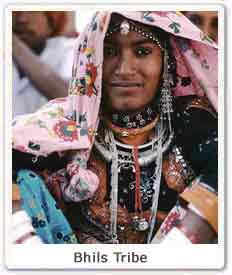Important Facts For Prelims
Declaring Mangarh Hillock as a Monument of National Importance
- 08 Jul 2022
- 3 min read
Why in News?
A report by the National Monuments Authority (NMA) called for the Mangarh hilltop in Rajasthan to be designated as a national monument in honor of 1500 Bhil tribal freedom fighters.
What is National Monuments Authority (NMA)?
- It was established under the Ministry of Culture in accordance with the requirements of the Ancient Monuments and Archaeological Sites and Remains AMASR (Amendment and Validation) Act, 2010.
- The NMA has been delegated specific tasks for the conservation and preservation of monuments and sites, including control of the banned and restricted areas surrounding centrally designated monuments.
- One of the NMA's roles is to evaluate granting permits to applicants for construction-related activities in restricted and regulated areas.
What are Monuments of National Importance?
- National ancient Monuments are defined under the Ancient Monument and Archaeological Sites and Remains Act,1958.
- The Act defines Ancient Monument as any structure or monument or any cave, rock sculpture, an inscription that is of historical, or archaeological interest.
- The Central Government is authorised to maintain, protect and promote the monuments.
What is the Background of the Mangarh Hillock?
- The hillock, situated at the Gujarat-Rajasthan border, is a site of a tribal uprising where a massacre of over 1500 Bhil tribal freedom fighters took place in 1913.
- The place is also known as the Adivasi Jallianwala, and there has been a demand to build a memorial.
- On 17th November, 1913, British forces opened fire on tribals gathered at the site who were holding a meeting in protest, led by a leader from the community Govind Guru, killing over 1,500.
What is Bhil Tribe?
- About:
- Bhils are commonly referred to as Rajasthan's bowmen. They are India's most widely dispersed tribal communities.
- As per Census 2011, Bhils are India's largest tribe.
- They are broadly classified into two types:
- Central or pure bhills
- Eastern or Rajput Bhils.
- The central Bhils can be found in the mountain regions of Madhya Pradesh, Maharashtra, Gujarat, and Rajasthan in India, and also can be found in Tripura's northwestern regions.
- They are considered as Schedule Tribe in Andhra Pradesh, Chhattisgarh, Gujarat, Karnataka, Madhya Pradesh, Maharashtra, Rajasthan and Tripura.
- Historical Perspective:
- Bhils are members of the pre-Aryan race.
- The term 'Bhil' is derived from the word villu or billu, which is known as Bow in the Dravidian language.
- The name Bhil is also mentioned in the ancient epics of Mahabharata and Ramayana.







